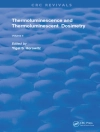Basic problems concerning the computer simulation of liquid metals in usual and extreme conditions with the use of interparticle potentials, mainly multi-particle potentials of the embedded atom model are considered in the book. The general questions of a structure of simple liquids, and the methods of simulation of non-crystalline systems (liquid and amorphous) – a method of molecular dynamics, Monte Carlo, quantum-mechanical modeling, etc. – are considered in the first five chapters. The types of interparticle potentials applied, the analysis of atomistic models, topological characteristics of liquids, and the results of modeling one-component and binary systems with the use of the simplest interparticle potentials are considered.In the second part of the book, a specification of interparticle interaction is given for 17 metals of the various groups of the periodic system with the use of the embedded atom model. Parameters of potentials under ambient pressure are found using the experimental data about properties of metal on the binodal, and for strongly compressed states via the metal properties found in Hugoniot adiabatic processes. The role of electronic terms in energy is considered in detail. Tables of the potentials are given in the Appendix. Then, thermodynamic, structural and diffusion properties of these metals in wide intervals of the pressure and temperatures are calculated (usually to hundreds of GPa and tens of thousands of Kelvin). The results of the calculations are tabulated.In the final chapters of the book, specific problems with respect to liquid metals are considered. Here, the problems of the structure and conditions in the center of the Earth, Moon and Jupiter satellites, calculations of shock adiabats, and the isotopic effect of diffusion are covered. The assessments of structure and temperature in the inner and outer cores of the Earth are given. Calculations of a series of shock adiabats for the initially porous or liquid metal samples are carried out, and questions of accuracy concerning the available experimental data are analyzed. Also, some non-classical mechanisms of liquid solidification, in particular, the cluster mechanism of solidification during strong overcooling, are discussed.The general problems of the thermodynamic description of nanoclusters are considered. The ambiguity of the use of the radius, volume, surface area and surface tension concepts for nanoclusters is shown, and a more reasonable approach is suggested. The series of nanoclusters of various sizes are constructed for several metals, and the dependence of their properties on the cluster size, including a melting temperature, are investigated. The possibility to compare the applicability of the Second Law of Thermodynamics in its usual form to the melting/solidification of nanoclusters is discussed. (Nova)
David K Belashchenko
Liquid Metals [PDF ebook]
From Atomistic Potentials to Properties, Shock Compression, Earth’s Core and Nanoclusters
Liquid Metals [PDF ebook]
From Atomistic Potentials to Properties, Shock Compression, Earth’s Core and Nanoclusters
Compre este e-book e ganhe mais 1 GRÁTIS!
Formato PDF ● Páginas 556 ● ISBN 9781536131413 ● Editor David K Belashchenko ● Editora Nova Science Publishers, Inc. ● Publicado 2018 ● Carregável 3 vezes ● Moeda EUR ● ID 6877648 ● Proteção contra cópia Adobe DRM
Requer um leitor de ebook capaz de DRM












